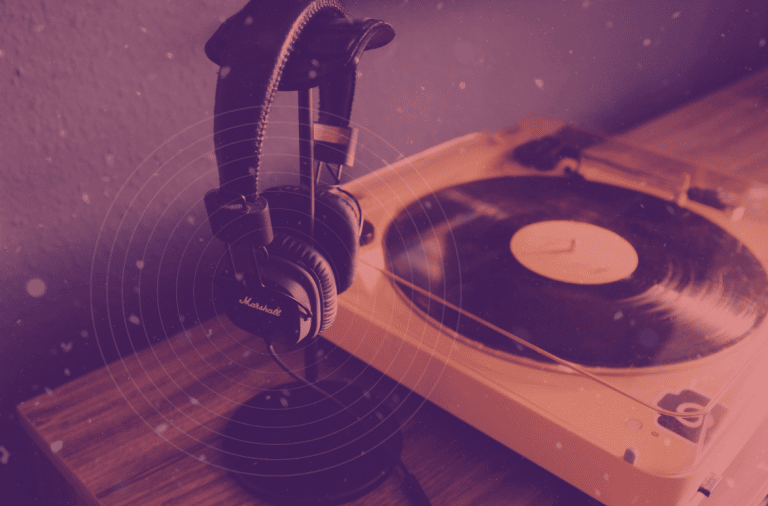Learning tunes goes hand in hand with being a jazz musician. But if you’ve ever tried to learn a tune by ear or attempted to memorize a list of jazz standards, you know it’s not the easiest task in the world…
In fact it can be downright frustrating.
Like many musicians, I struggled for years trying to learn long lists of tunes. Continually forgetting the notes or chords, getting stuck “thinking” through the progression, and never quite improvising the way I wanted to…
But at the end of the day those tunes were always there waiting for me in the practice room and on the stage…and this is why learning & practicing tunes is essential for every player!
You see, not knowing tunes can stop you from going to a jam session, prevent you from performing with other players, and even hold you back from improvising the way you want to…
And when you think about the big musical picture, all of your practice is building toward that moment where you tell a musical story through the medium of song.
That’s exactly why we’ve written a ton about useful tunes for learning jazz improvisation. Whether it’s one tune like All the Things You Are or lists of important tunes like 9 Jazz Standards to Boost Your Melodic Skills…
But today we’re not going to focus on which tunes you should learn, rather how you should go about learning them.
Remember, learning tunes doesn’t have to be a burden that you avoid in the practice room. It can be an enjoyable process that you approach with and without your instrument.
Below we’ll show you why it’s not only possible to reach your goals with the jazz repertoire, but how you can do it every single day…
Redefine “learning a Tune”

Before you set out to learn one tune or even an entire list of jazz standards, it’s important to understand why you’re doing it in the first place…
What exactly are you trying to accomplish by “learning tunes??”
Are you simply trying to memorize a bunch of melodies and chords from a piece of paper? Or do you have a larger musical goal? This can be easy to lose sight of in the practice room…
But if you zoom out and look at your larger work as a musician, the goal is to one day have a set of tunes that you know inside and out – tunes that you can confidently perform and improvise creatively over.
The good news is that reaching this goal doesn’t mean that you have to learn 1000s of tunes!
However, it does mean that you need to have a specific set of tunes that you’ve ingrained to the point where you intimately know the melody & harmony and can tell a musical story…something that takes more than a few minutes of memorization.
There is a difference between memorizing information and the process of absorbing & immersing yourself in the sound of music. Strive to learn tunes through a process of discovery, via ‘oral tradition’, one that utilizes all of your musical skills. This is what will allow you to improvise and convey a musical message.
Redefine what “learning a tune” means
Improving the way you learn tunes means shifting the way you think about the entire process…
The typical approach to tunes is to cram everything in our minds in one sitting like you’re preparing for a test, with the expectation that after one short memorization session we’ll be able to play like a pro.
However, this never seems to be the case...instead, you need to view learning a tune as an ongoing process that involves all of your musical skills – especially your ears…
*Why learn tunes by ear? Learning jazz standards by ear puts you into direct contact with the music itself. The benefit in the process of discovering the melody and harmony will commit it to memory on multiple levels and build skills like Ear training and Jazz harmony. A tune that you learn via ear will be one that you can perform via ear!
Even though it may be difficult and frustrating at first, challenge yourself to learn these tunes by ear. Remember, your ability to perform and improvise over these tunes goes directly back to the process you are using to learn them.
Learning a tune doesn’t only have to be defined as you in a practice room with a lead sheet memorizing chord symbols and notes. Learning a tune can be…
- A 20 minute focused listening session
- Hearing a tune, singing the melody & visualizing the changes
- Figuring out the chord progression at the piano
- Working on techniques to improvise over the tune
And yes, learning a tune can be you in a practice room with your instrument figuring out and memorizing the melody and the chord progression…
3 Steps to Learning Jazz Tunes
The art of learning a tune can be distilled into 3 essential steps – activities that can be done separately or in close succession:
- Listening to the tune
- Figuring out the details
- Interpreting the song
At each step of the way, you are “learning the tune”…
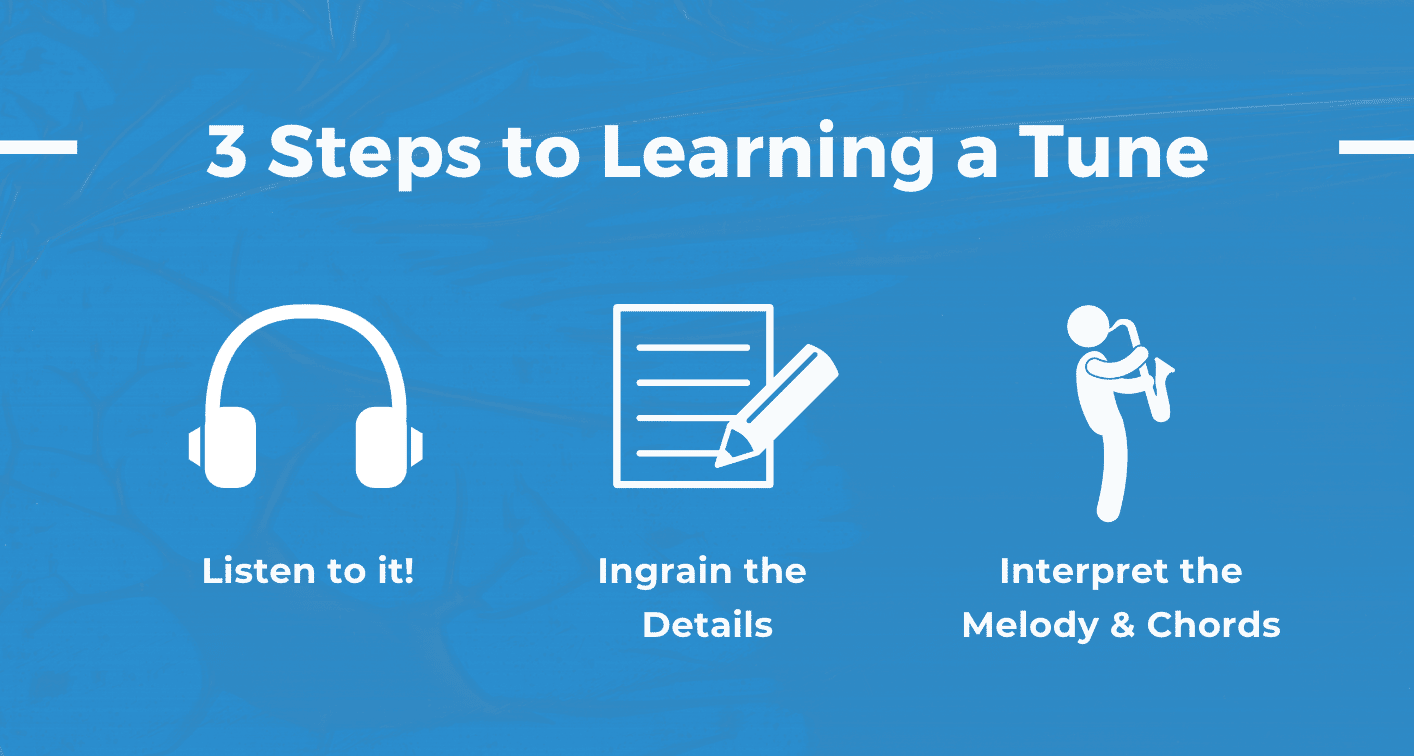
Looking at it from this perspective makes the entire process more manageable, rather than a long list of information to memorize, you have an activity or habit that you can easily incorporate in your daily routine.
Make a list of tunes that you want to learn, anywhere from 5 tunes to twenty tunes…tunes to listen to, melodies & chords to ingrain, and standards that you’ll eventually perform.
The goal now is to do one of these 3 steps (or more) with a tune every single day. As we’ll show you below, the more developed your musicianship and musical skills are, the faster and this entire process will go.
Let’s get started…
I. Listen to the tune
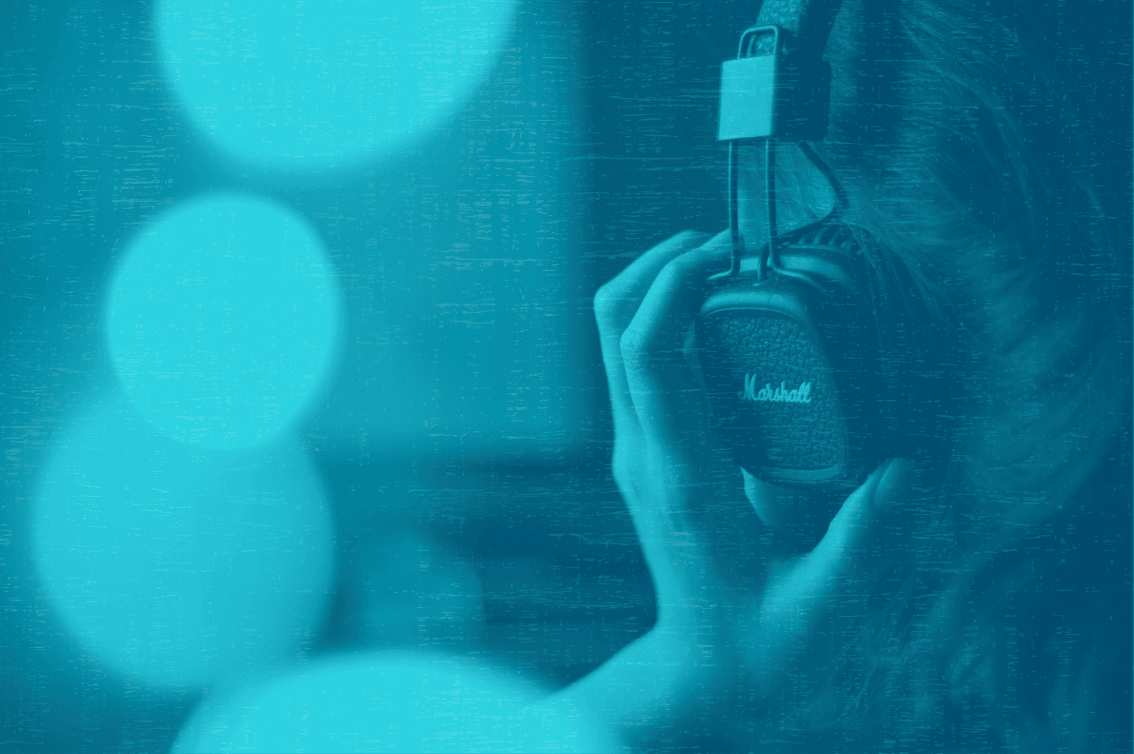
Learning any tune, no matter how complex or simple it is, starts with one thing – listening. And this is an activity that you can do anywhere or anytime, regardless of your skill level!
The ear is your internal connection to the sound and feeling of music, it’s the difference between the soul & feeling of a song and the bare theory information that tunes are often reduced to.
If your first (or only) step in learning a tune is looking at the sheet music or a fake book, you are leaving out the most important part of any tune – the sound!
When you perform a tune and improvise, you want to be coming from an internal source of sound, drawing upon the melody, harmony, and rhythm that you’ve ingrained through listening.
Focused listening vs. Passive listening
Your job in this first stage is to listen with the intent to learn, to ingrain specific musical knowledge from a recording.
This requires an ability to focus on different parts of the recording – the melody line, the harmony, the chordal instruments, the bass line, the drums – rather than passively ‘hearing’ the sound.
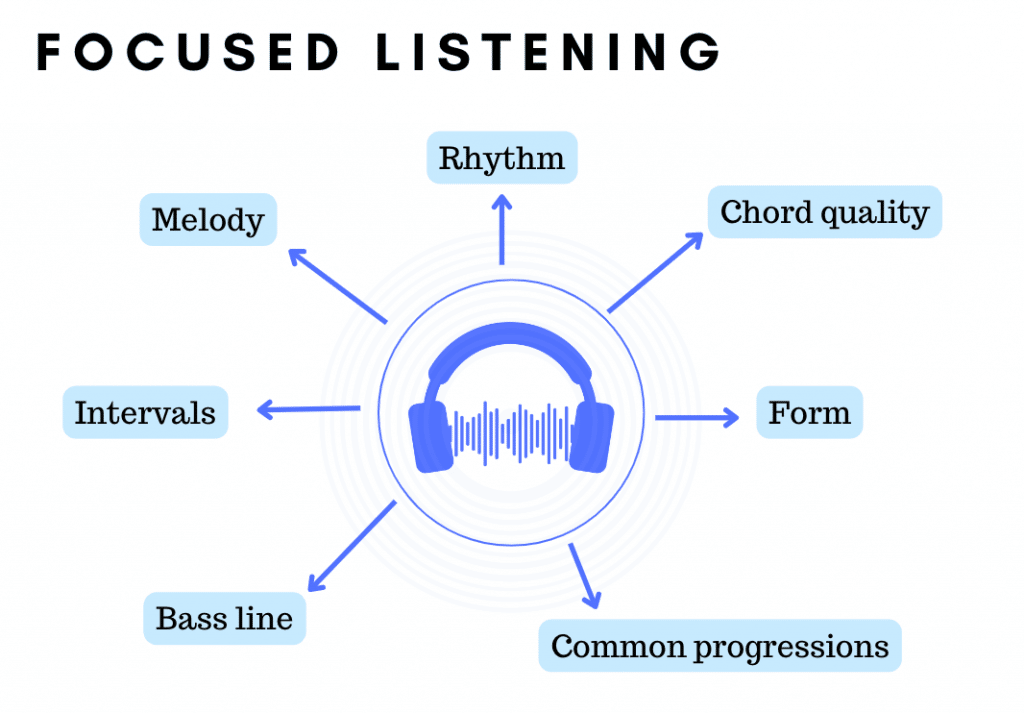
Start the listening process today…
To start, simply pick out one tune. It helps to find an easy and clear recording of the tune to learn from. Here are a few examples of common jazz standards to get an idea of focused listening in action…

For instance you might want to learn Chet Baker’s version of “But Not For Me”…
To begin isolate the first phrase of the melody:
As you listen, focus in on the melodic line. After listening a few times, try to sing the melody by yourself. Then listen some more! Repeat until you have the melodic line ingrained and can confidently sing it.
Another standard you may be learning is “Good Bait” played by John Coltrane…
In this listening, along with the melody you might be trying to hear the chord movement or bass lines…
Can you hear the bass movement? What does this motion tell you about the chord progression? Keep listening until this sound is ingrained in your ear.
Finally, you might want to learn the tune “Invitation” as played by Roy Hargrove:
Listen for the chord qualities – Major, minor, dominant? Can you hear specific chord tones? Do you recognize common chord progressions?
Don’t worry if you don’t have all the answers in this first step – the main goal is to get the sound of the tune in your ear!
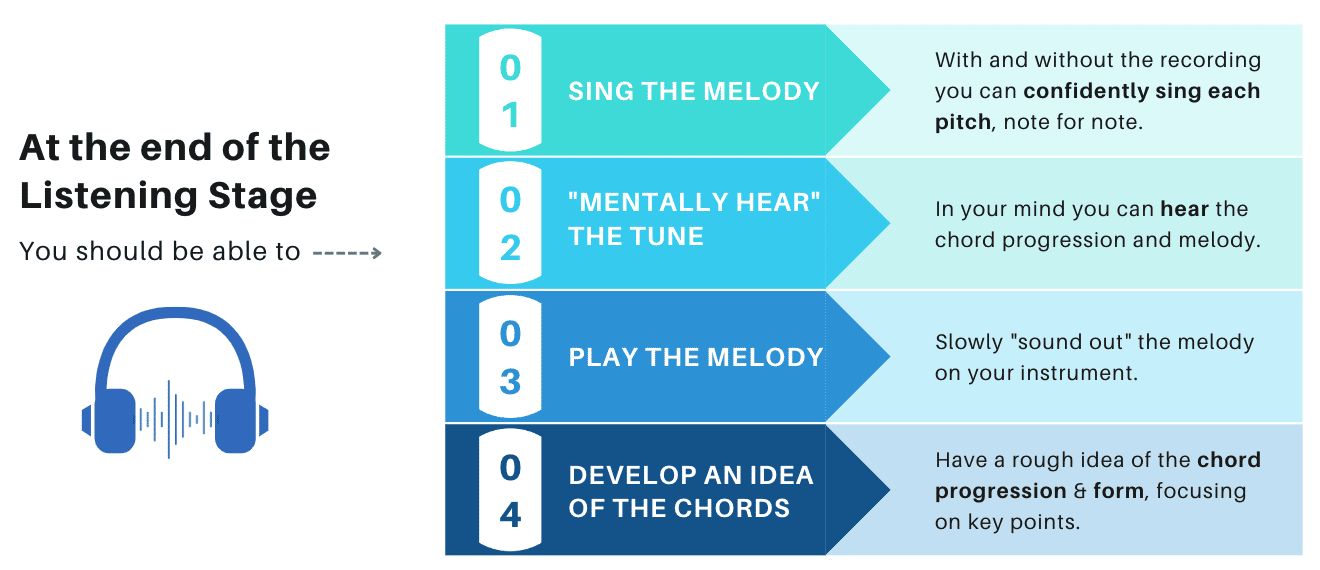
There are countless jazz standards out there to learn, but no matter which one you choose the process starts with focused listening.
II. Learn the Melody & Chords
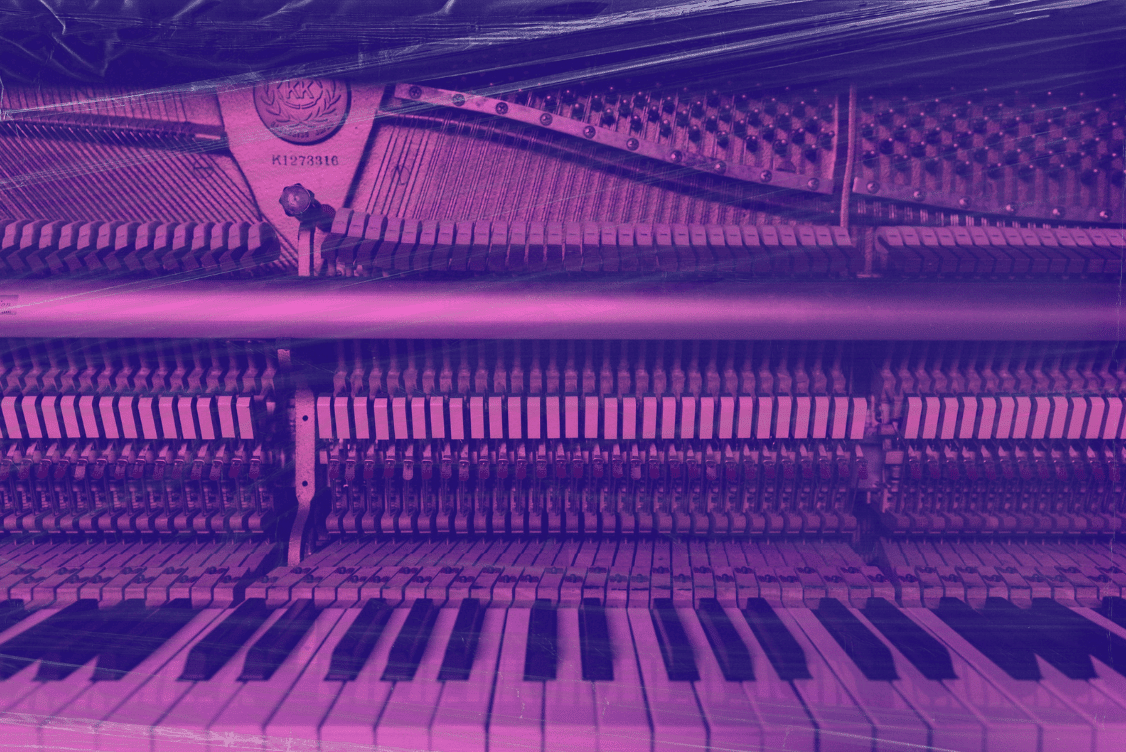
The second step in learning a tune is figuring out the details of the melody & harmony and then ingraining them into your mind and ear…
The goal here is to learn the exact chord progression, to ingrain each phrase of the melody, and to understand how the melody relates to the harmony…eventually making sense of the tune in your own way.
Depending on your ear and the level of your harmonic and melodic knowledge, this can happen simultaneously with the first step…
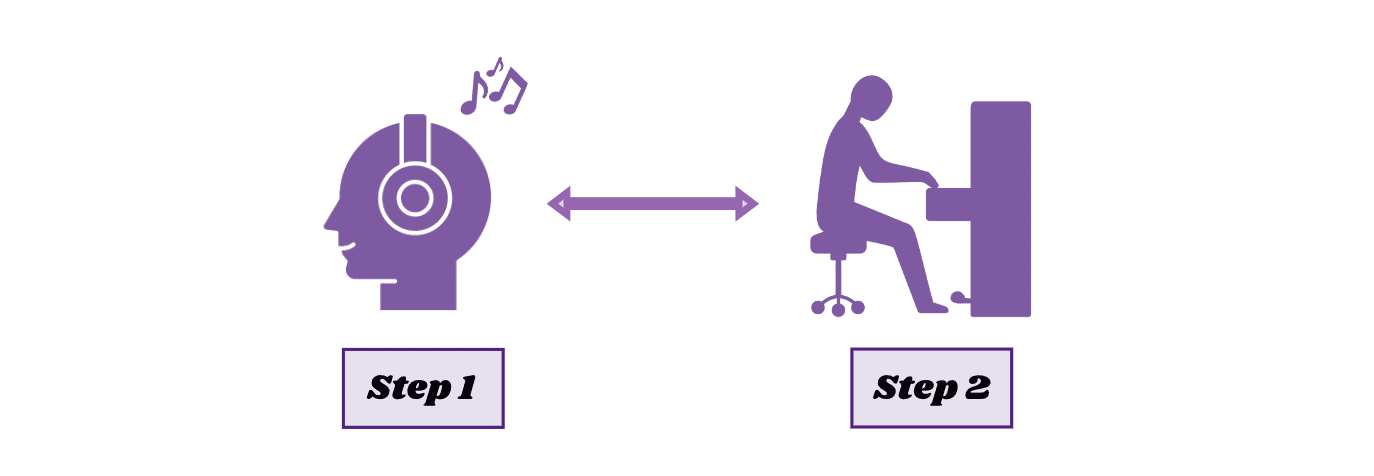
As you listen intently to specific sections of the melody and harmony, check notes, confirm your guesses, and isolate and breakdown tricky sections. Eventually, these two steps will become one and the same.
Time to get into the details
In this step your job is to go back to the recording and the sound of it ingrained in your ear to slowly figure out each musical detail of the tune.
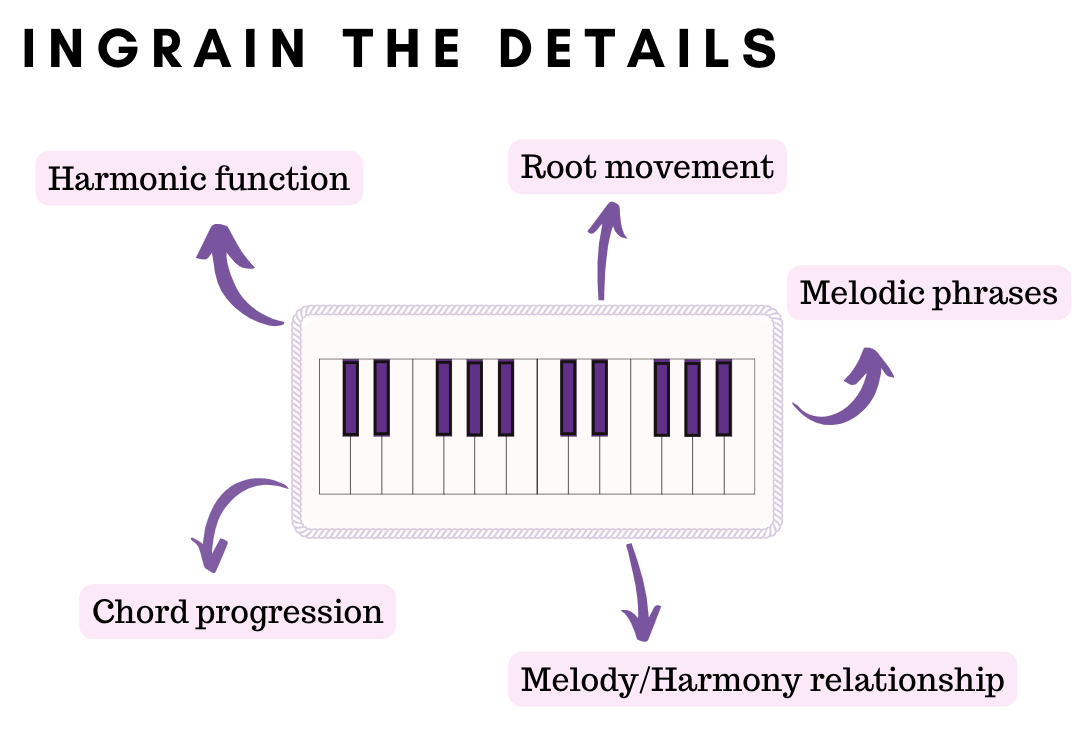
Specific steps in ingraining the details
As you listen closely to the recording, focus on these particular areas:
- Breakdown the melody into intervals or specific chord tones
- Determine the key – Major or minor?
- Figure out the first chord, then the second chord
- Find the bass or root movement of the chord progression
- Figure out the chord progression and make sense of the harmonic function in the larger key
- How does melody relate to chord progression?
- What makes progression unique?
- Are there variations or chord subs that you can use?
- What common chord progressions do you hear?

These are all details and questions to answer as you slowly work through the recording piece by piece…
In the second step of learning a tune, the piano is an invaluable tool for figuring out each detail of the tune, a reference point for melodic notes, chords, bass notes/movement, and determining chord progressions!
Ingrain the details of a tune today…
To see this process in action let’s go back to the tune Good Bait…this time deciphering the musical details of the melody and harmony:
What is the key? Or what is the first chord?
- It sounds major and checking with a piano, Bb first chord, and the tune/progression sounds like Bb Major:

What is the exact melodic line?
- Listen for intervals and chord tones – the note on the downbeat sounds like the root:

- In the next part of the melody is the sound of the b9 and #9 on a V7 sound:

What is the bass line?
- The bass notes usually are the root of the chords and determine chord movement:

The melody will give you clues to the harmony and the harmonic movement will give you clues to the melody. Same with the bass movement – if you get stuck or check out the bass line to identify the roots of chords.
What are the chords?
- Taking the bass notes into consideration and the sound of the progression, it sounds like a Rhythm Changes A section in the key of Bb:

Slowly the entire musical picture will come into focus, with each layer revealing a new detail.
The more you learn melodies by ear and figure out chord progressions and bass lines, the easier and faster this step will be!
3 Complimentary skills for learning tunes
Learning a tune by ear and figuring out the melody and chord progression involves involves all of your musical skills, however developing three specific skills will make the entire process much easier:
- Ear Training – Learning tunes means using your ears to identify chord tones, chord quality, intervallic relationships, melodic lines, and chords & progressions. Start training your ears today and check out The Ear Training Method to quickly build your skills.
- Harmonic Function – The jazz repertoire is built up of essential harmonic elements that recur in the majority of standards. The faster that you can identify these elements, the easier it will be to learn any tune. Our course Jazz Theory Unlocked is a great starting place!
- Jazz Language – Hearing melodies and being able to play them goes back to your knowledge and mastery of the jazz language. Recognizing common melodic tactics over chords and progressions is key to quickly ingraining musical phrases. To get up to speed check out the Melodic Power course.
The more time you spend learning and figuring out melodic lines and chord progressions by ear, the more you will know and recognize – you won’t be starting from scratch, rather building a musical library in your mind that you can draw from.
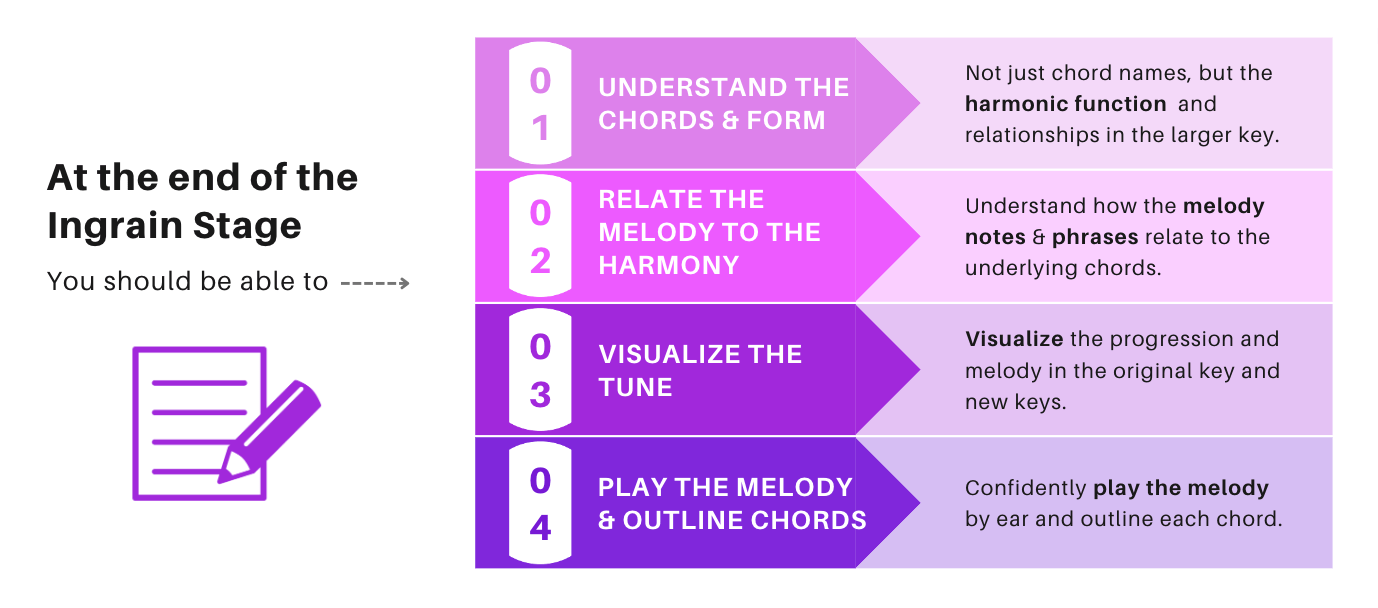
iii. Interpret the tune
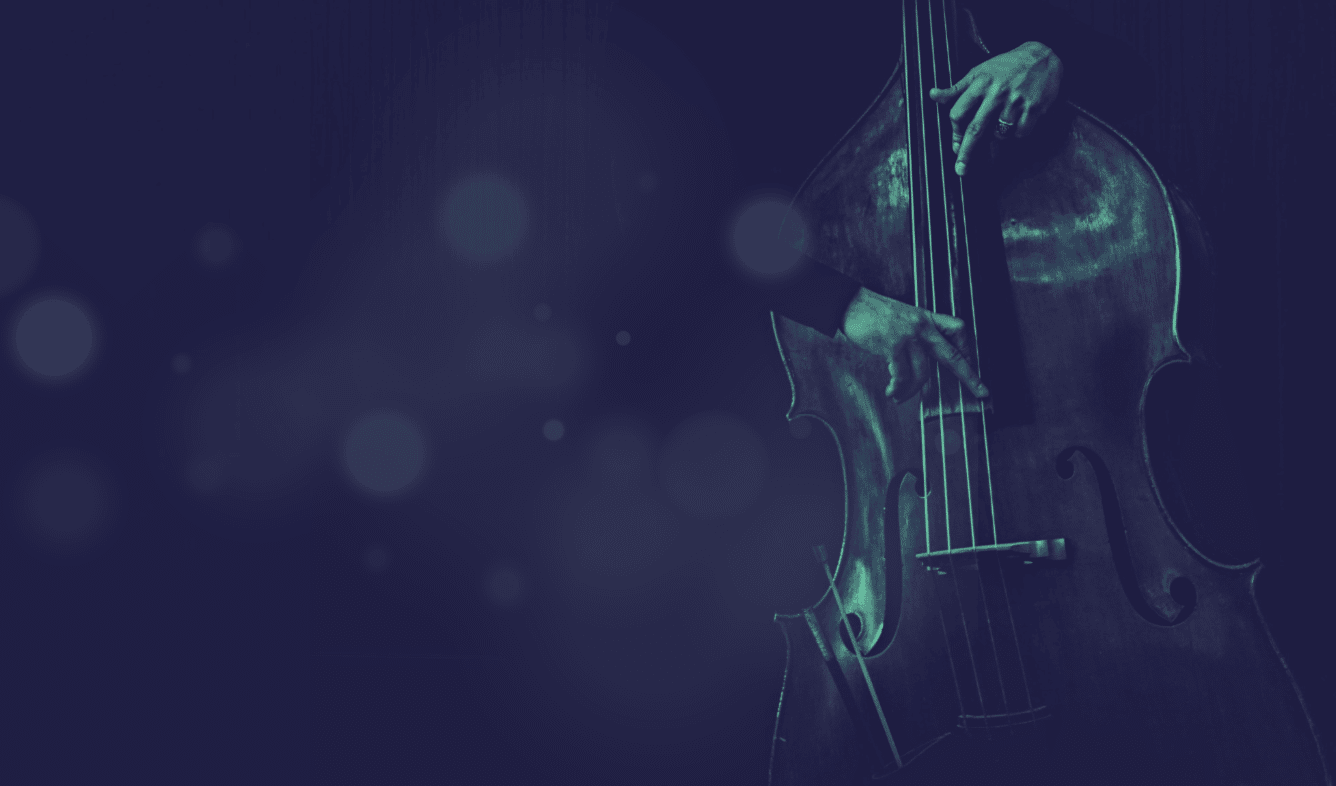
The third step is all about making the tune your own…
Specifically shifting the focus from the details of notes and chords to more musical concerns – phrasing, sound, what are you hearing and feeling, and performing/interpretation – telling a musical story.
Remember, you’re not playing a tune simply to repeat the right notes or to remember the right chords…you’re trying to create a mood, impart emotions.
In the typical approach to learning tunes, many of us don’t get to this stage because we haven’t ingrained the tune – the sound or details – we’re trying to improvise and perform while we are still thinking about individual notes and chords!
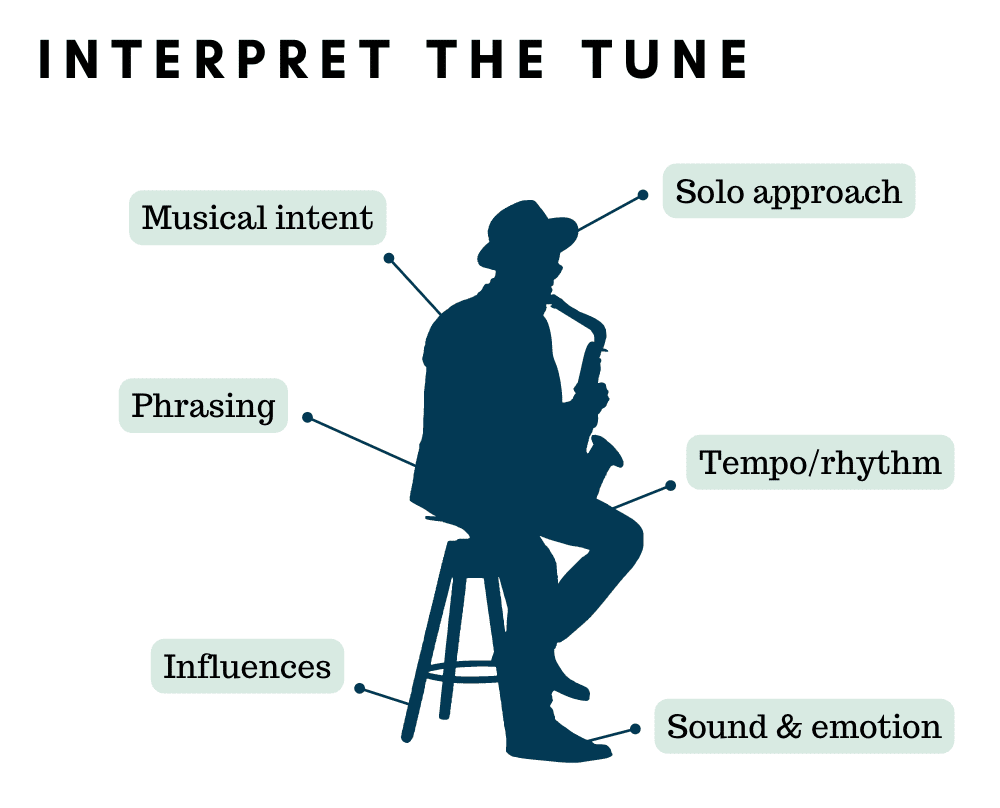
Interpreting a tune means getting beyond the nuts and bolts of the notes and chords and thinking about musical presentation and phrasing.
What sound and musical feeling do you want to get across to the listener as you perform this tune?
As you learn a tune, find different versions of the song to emulate, thinking about tempo, sound, feel, etc. For instance, let’s take the tune Invitation…
We’ve already checked out Roy Hargrove’s version here:
But what other versions can we listen to and draw from? Listen to Joe Henderson’s take on the tune:
Or John Coltrane, who approaches it as a ballad here:
Using these musical approaches as inspiration, the question now is…how do you want to interpret this tune?
Which direction do you want to take and what musical feeling do you want to convey to the listener?

Interpreting a tune is something that takes time and evolves as you grow as a musician. However, it’s something that you should shoot for every time you perform a tune!
Start Your Journey with tunes
The truth is no musician knows every tune…
It’s not possible for one person to know and sound great on every tune ever written, and it’s not realistic for this to be your goal.
But what you can do is redefine the process of learning tunes, develop a solid repertoire of common standards that you know intimately, and build the complimentary skills that will help you get through any tunes that you might not know.
Developing great ears and expanding your knowledge of harmony are two essential skills that will allow you to play any tunes you’re unfamiliar with. And this is the key to navigating the jazz repertoire.
Right now it might seem overwhelming to learn hundreds of tunes, but it is feasible to listen to hundreds of tunes if you make it a part of your daily routine.
Implementing this 3-step process to building your jazz repertoire in the practice room will allow you to add new tunes to your arsenal each day and deepen your mastery of tunes so you can perform at your best!
